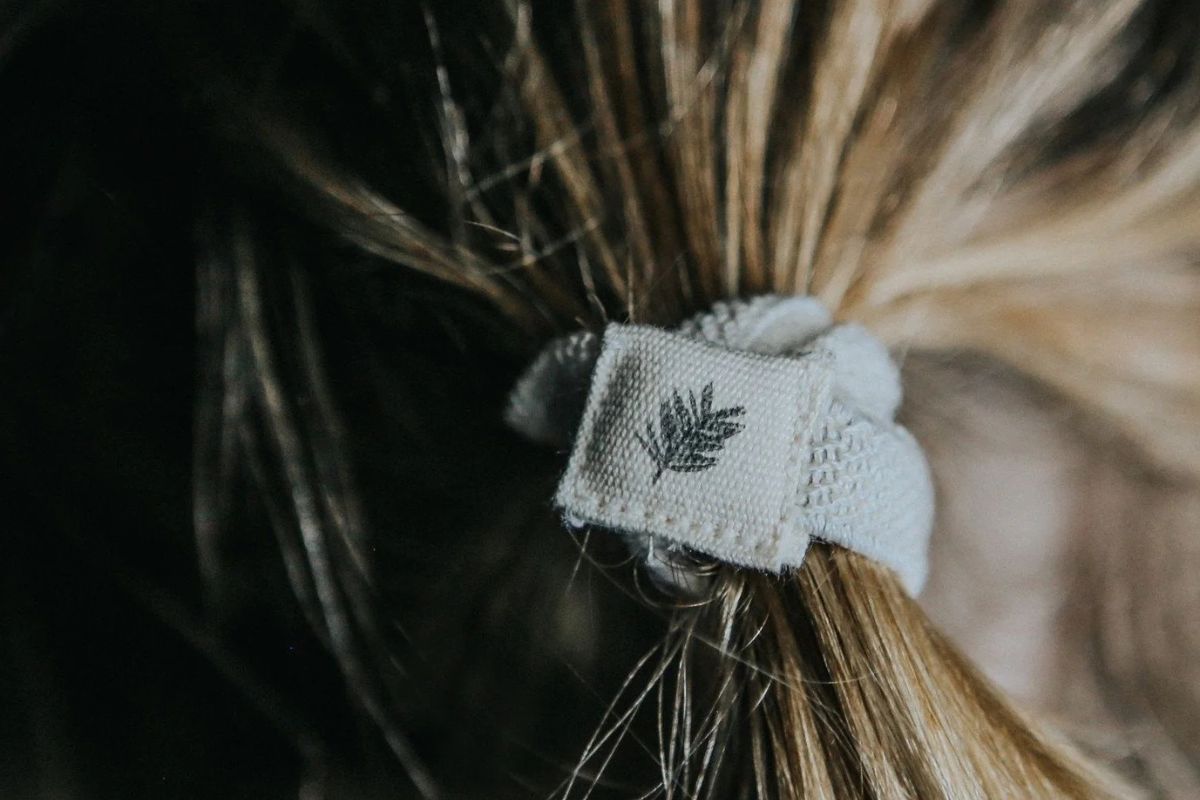Your Cart is Empty
INFO

Is Dry Brushing Good For Sensitive Skin?
November 10, 2025 4 min read
Dry brushing has become a go-to ritual for smooth, glowing skin—and for good reason. It can invigorate your body, boost circulation, and leave you feeling refreshed from head to toe.
But if your skin leans on the delicate side, you might be wondering: Is dry brushing good for sensitive skin? You’re not alone.
According to research, around71% of adults report having some degree of sensitive skin. That means many of us fall into the “sensitive skin” category, although the severity and underlying causes can vary significantly.
The good news is that sensitive skin doesn’t automatically mean “no”. With a few simple tweaks, even those with mild sensitivity can safely enjoy the perks of dry brushing.
In this post, we’ll break down how to do it gently, what to watch out for, and when it’s best to skip it altogether.
Why Sensitive Skin Requires a Gentle Touch
Sensitive skin is more reactive than average, meaning it can easily become irritated from friction, pressure, or environmental factors.
Sensitive skin happens when your skin’s natural protective barrier is weaker than usual or when irritation triggers inflammation. Essentially, your immune system can overreact to everyday irritants or allergens, causing your skin to feel uncomfortable.
Some people are born with sensitive skin, while others develop it after exposure to triggers that inflame their skin.
Signs your skin may be sensitive:
-
Red, swollen, or itchy patches
-
Stinging or burning sensations
-
Rashes, hives, or blotchy spots
-
Dry areas that may crack, blister, or bleed
-
Thick, rough, or leathery patches
That’s why dry brushing requires a careful, gentle approach. Sensitive skin reacts more easily to friction and pressure, so brushing too hard or using stiff bristles can leave your skin red, tender, or scratched.
 Sensitive skin is more reactive than average, meaning it can easily become irritated from friction, pressure, or environmental factors.
Sensitive skin is more reactive than average, meaning it can easily become irritated from friction, pressure, or environmental factors.
Is Dry Brushing Right For You?
Not all sensitive skin is the same, and understanding your skin is key before trying dry brushing.
Mild sensitivity refers to skin that may react occasionally to new products or environmental changes, but isn’t inflamed, broken, or chronically irritated. People with mild sensitivity might notice slight redness or tingling, but their skin generally recovers quickly and isn’t prone to flare-ups.
If your skin falls into this category, you may be able to try gentle dry brushing, all the while paying attention to how your skin reacts.
On the flip side, if you have active conditions like eczema, psoriasis, rashes, open wounds, or visibly inflamed areas, dry brushing isn’t recommended. The friction and exfoliation can worsen irritation and disrupt your skin’s barrier further.
In these cases, it’s much safer to avoid dry brushing entirely and opt for gentler exfoliation methods.
 If you have active conditions like eczema, psoriasis, rashes, open wounds, or visibly inflamed areas, dry brushing isn’t recommended.
If you have active conditions like eczema, psoriasis, rashes, open wounds, or visibly inflamed areas, dry brushing isn’t recommended.
Dry Brushing For Sensitive Skin: A Guide
If your skin is mildly sensitive and free from conditions like eczema or rashes, here’s how to enjoy the benefits of dry brushing safely.
1. Choose the Right Brush
Choosing the right body brush for sensitive skin is key. Look for one with soft, natural bristles that can exfoliate without irritating delicate areas like the chest.
For instance, sisal bristles, as seen on our Natural Dry Body Brush, are naturally firm yet flexible, helping to stimulate circulation and encourage the renewal of skin cells without being harsh on the skin.
If even a soft brush feels too strong, a plain, dry washcloth can be a gentler alternative.
Tip: Breaking in a New Brush
New brushes can feel stiff at first, which can be uncomfortable for sensitive skin. To make your first sessions gentler on sensitive skin, you can “break in” the brush:
-
Soak the bristles (just the bristles) in cold water for 24 hours.
-
Dry them by rubbing gently with a towel for 10 minutes.
-
Repeat the soaking and towel-drying one more time, then hang to air dry. Test the brush the next day, and if it still feels firm, repeat the process.
Breaking in your brush helps soften the bristles, making them more comfortable for delicate skin while still allowing you to enjoy the benefits of dry brushing.

Look for a body brush with soft, natural bristles that can exfoliate without irritating delicate areas.
2. Mind Your Pressure
Sensitive skin doesn’t need aggressive brushing. Use light, sweeping motions and avoid pressing too hard.
Start slow. Dry brushingonce every two weeks is often enough to see benefits without causing irritation. Always pay attention to your skin and stop immediately if you notice redness, swelling, or discomfort.
3. Avoid Problem Areas
Never brush over broken skin, cuts, scrapes, lesions, burns, sunburns, or inflamed areas. Raised bumps, moles, or warts should also be skipped.
Sensitive areas like the face require even gentler care. It’s best to use products designed specifically for facial skin instead of dry brushing.
4. Moisturise After Brushing
Dry brushing exfoliates the skin, which can leave it feeling dry. To replenish moisture and keep your skin soft and healthy, follow up with a nourishing oil, serum, or moisturiser made from natural, gentle ingredients.
Avoid products with strong fragrances or multiple additives, as these can trigger irritation or flare-ups. Even a simple option like plain petroleum jelly can help lock in hydration and protect delicate skin after brushing.
5. Listen to Your Skin
Your skin knows best. If you notice redness, soreness, or any signs of irritation, stop brushing and allow your skin time to recover.
Dry brushing should feel invigorating and soothing, never uncomfortable or painful. Adjust your pressure, frequency, or technique as needed, and always let your skin guide your routine.
Ready to Try Dry Brushing?
And there you have it! Our guide to dry brushing safely, even if your skin is on the more sensitive side.
If you’re looking to add dry brushing to your self-care routine, check out our Natural Fibre Dry Body Brush, crafted with gentle sisal bristles and sustainable materials.
At Wild & Stone, we believe in mindful self-care from start to finish, from the materials we use to the way our products are made.
Share your dry brushing journey with us at hello@wildandstone.com or tag us on Instagram with #wildandstone. We’d love to see how you’re caring for your skin!
Also in Sustainable Living Blog

The 5 Benefits of Using a Bamboo Toothbrush
August 07, 2025 4 min read
Discover five benefits of using a bamboo toothbrush, from saving the planet and oral health to the fastest plant in the world.

The 5 Best Eco-Friendly Kitchen Products
July 30, 2025 4 min read
Discover the 5 best eco-friendly kitchen products to take care of yourself, your home & the environment.

Are Hair Ties Bad for the Environment?
June 16, 2025 4 min read
We’ve all been there – you’ve lost a hair tie again, and need to replace the pack of 50 you swore would last you. That one lost hair tie might seem minor, but it joins billions of others contributing to a surprisingly large environmental problem. Learn more - including some kinder alternatives - in this post.
Make your inbox a little more eco!
Sign up and save 10% on your first order of 2 items or more.
Keep an eye on your inbox for the latest eco trends, articles, deals and product releases.


